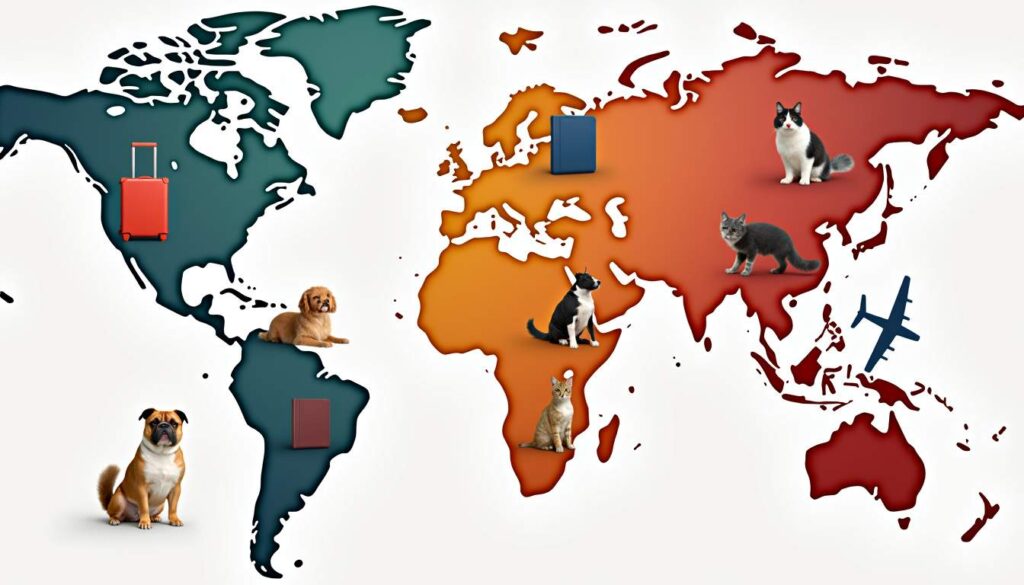Understanding International Pet Travel Regulations
Moving with pets internationally can be a complex process, largely due to the varying regulations imposed by different countries. These regulations are set to ensure the safety and health of the animals as well as the public. By understanding these rules ahead of time, you can avoid delays and ensure a smoother transition for your furry family members.
Each country has its own set of rules regarding vaccinations, documentation, and importation conditions. Before planning your move, it is essential to research the specific requirements of your destination country. This can typically be found on the official governmental website or through relevant consulates. Additionally, consider consulting with a pet relocation specialist who can provide insights and assist with the paperwork, making the process less daunting. They can also help you navigate any unexpected hurdles that may arise, ensuring your pet’s journey is as seamless as possible.
Navigating Airline Policies for Pet Travel
Airlines have specific policies for traveling with pets, and these policies can vary significantly. Generally, you can choose to have your pet travel in the cabin with you or as cargo, depending on their size. Familiarize yourself with the airline’s pet travel guidelines, contact their customer service for clarification, and confirm any additional fees that might be charged. It’s also wise to check if the airline has any restrictions on certain breeds, as some may not be allowed in the cabin due to safety concerns.
Booking your pet’s travel early is advisable, as aircraft cabins have limited space for pets. Ensure to check the dimensions of your pet carrier and confirm that it meets the airline’s specifications to avoid any issues on the day of travel. Furthermore, consider your pet’s temperament and health when planning the journey. For example, if your pet experiences anxiety during travel, you might want to discuss options with your vet, such as calming medications or alternative travel arrangements that could make the experience more comfortable for them.
Comprehending Quarantine Laws by Country
Quarantine laws vary from one country to another, and it’s crucial to be aware of the regulations that apply to your destination. Some countries require pets to undergo a period of quarantine upon arrival, which can last from a few days to several weeks. This is often a precautionary measure to prevent the spread of diseases that could affect local wildlife or other pets.
To avoid unwanted surprises, make sure to gather information on the quarantine conditions well in advance. This includes understanding the period of required isolation, any vaccinations that might need to be recorded before travel, and the necessary health certificates. Additionally, you might want to look into local veterinary services in your destination country, as having a trusted vet on hand can be invaluable in case your pet needs medical attention during or after the quarantine period. Knowing what to expect can help you prepare mentally and logistically for this transition, ensuring that your pet remains healthy and happy throughout the process.
Preparing Your Pet for the Big Move
Preparing your pet for an international move requires patience and careful planning. This ensures they remain calm and healthy, which is essential for both their wellbeing and yours during this hectic time.
Start by scheduling a visit to the veterinarian to ensure your pet is fit for travel. Verify that all vaccinations are up to date and discuss any additional vaccines that may be necessary based on the destination country’s laws.
Health Check-ups and Vaccinations
Most countries require specific vaccinations for pets before import, including rabies and others depending on your pet’s species. Make sure you have a comprehensive health check-up done by your veterinarian, including a health certificate that meets the requirements of your destination country.
Additionally, getting your pet microchipped is highly recommended. A microchip can act as a permanent form of identification if your pet gets lost during the move. Always keep a copy of vaccinations and health documents easily accessible during travel.
Acclimating Your Pet to Travel Conditions
Preparation also involves acclimating your pet to the idea of traveling. Start by gradually introducing them to their carrier. You can do this by allowing them to explore and even sleep inside the carrier over a few days. This will foster a sense of security.
Take your pet on short car rides and gradually increase their travel time to help them get used to being on the move. Familiarizing your pet with different modes of transportation will help alleviate anxiety on a travel day.
Essential Items for Pet Travel
Before the travel day arrives, it is necessary to prepare a checklist of essential items for your pet. Ensuring you have everything needed will help keep your pet comfortable and secure throughout the journey.
Gather food and water bowls, sufficient food for the trip, and other daily necessities such as leashes, waste bags, and grooming supplies. Having these on hand can make travel smoother and help you manage your pet’s needs effectively.
Choosing the Right Pet Carrier
The safest and most suitable pet carrier plays a crucial role in your pet’s travel comfort. Choose a carrier that is well-ventilated, sturdy, and provides sufficient space for your pet to stand and turn around. Consider carriers that meet both airline standards and those required by international regulations.
If your pet is anxious, look into carriers that offer extra comfort features, such as padding or a familiar blanket. Introducing your pet to the carrier before travel is essential for ensuring they feel safe and comfortable.
Packing Essentials for Pet Comfort and Safety
In addition to the carrier, make sure to pack items that will provide comfort and safety for your pet during travel delays or layovers. A collar with an ID tag, extra leash, and familiar toys can help reduce stress for your pet.
First-aid kits for pets, complete with bandages, antiseptics, and any prescribed medications, are also invaluable. Additionally, keep portable water bottles and a collapsible bowl handy to maintain hydration during the journey.
Handling the Logistics of International Pet Travel
Logistics play a significant role in ensuring a successful international move with your pet. Careful planning and consideration can make the process more manageable and less stressful for both you and your pet.
Weigh the pros and cons of hiring a pet relocation service versus handling the logistics yourself. While hiring professionals might incur additional costs, they can provide valuable expertise and assistance in managing paperwork and transportation arrangements.
Hiring a Pet Relocation Service: Pros and Cons
A pet relocation service can simplify the moving process significantly. They assist with all necessary paperwork, vaccination records, and logistics associated with moving pets internationally. Their expertise can help navigate complex regulations and avoid delays.
However, it is essential to consider the added expense and ensure you choose a service that has positive testimonials and credentials in animal relocation to ensure your pet’s safety.
DIY Pet Relocation: Steps and Considerations
If you prefer a more hands-on approach or want to save money, consider a DIY relocation. Start by researching entry requirements of your destination country, including the necessary documentation. Create a checklist of what needs to be done to prepare for your pet’s journey.
Arrange your travel plans well in advance and be prepared for possible complications like layovers or delayed flights. Staying organized and planning each step will help to ease the burden during the moving process.
Settling Down: Helping Your Pet Adjust in a New Country
Upon arrival in your new country, take time to help your pet acclimate to their new environment. This is crucial to ensure they adjust well and reduce anxiety during this transition.
Creating a designated pet space with their belongings can provide a sense of familiarity. Establish a routine as soon as possible; consistency helps pets feel secure and reduces their anxiety during this period of adjustment.
Dealing with Pet Anxiety Post-Move
It’s common for pets to experience anxiety after a big move. Signs may include hiding, excessive barking, or changes in eating habits. Providing a quiet space for your pet, coupled with regular exercise and time for bonding, can significantly help alleviate their stress.
If anxiety becomes a persistent issue, consider consulting with a veterinarian who might recommend behavioral training or medication to help your pet settle in better.
Finding Pet-Friendly Accommodations and Services
Lastly, ensure that you have prepared for your pet’s needs in terms of accommodations and local services. Look for pet-friendly housing and familiarize yourself with local veterinary clinics, parks, and pet-friendly amenities.
Joining local pet communities can also be beneficial. They can provide valuable tips on local services and socialization opportunities, making it easier for your pet to adjust to their new life.
















